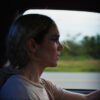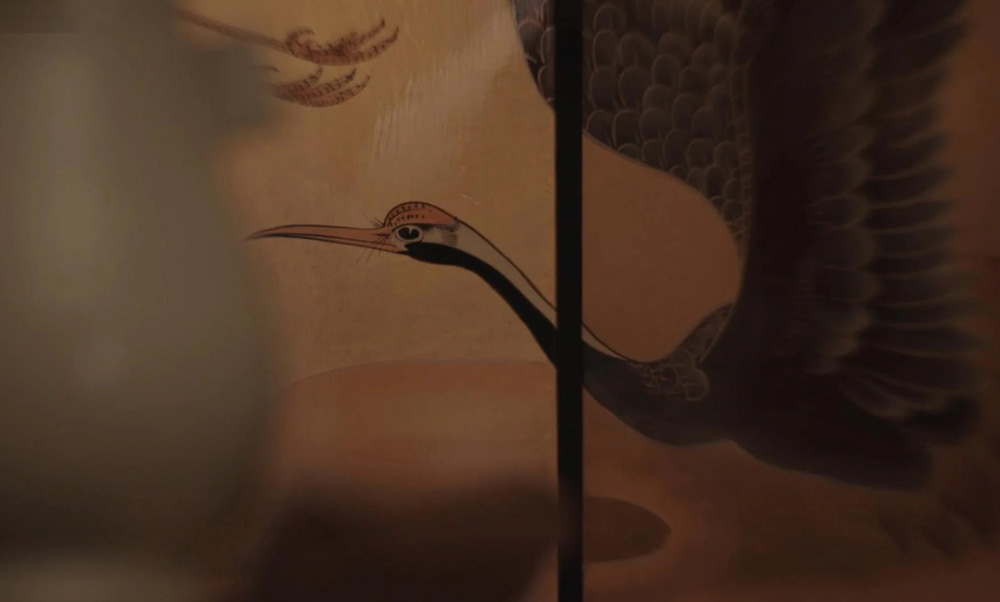“Pictures don’t tell the whole story,” Eddie Adams can be heard saying towards the start of “On Healing Land, Birds Perch,” a possibly surprising statement from the Pulitzer Prize-winning photojournalist, but a necessary acknowledgement when his work could be so striking that it felt definitive. Although Adams, a photographer at the Associated Press, made a habit of being at the right place at the right time, he was well aware that any time he snapped a photo, he would be moving on to something else while the reverberations of what he captured in the moment would stay with his subjects for years to come.
That was particularly true in the case of his best known picture, published on front pages around the world during the Vietnam War showing its horrors as it captured General Nguyen Ngoc Loan, a local police chief in Saigon, preparing to execute Nguyen Van Lem, a member of the Viet Cong, with a gun held to his head in the streets of the city. The picture was taken during the Tet Offensive in which the spring Vietnamese holiday of Tet took on a very different meaning as major cities throughout the country were subject to attacks by the Viet Cong and its stark depiction of the violence on the ground shifted public perception of American support of the war, ultimately helping to lead to its end. However, as director Naja Pham Lockwood finds nearly a half century after it changed the hearts and minds of many, those with direct connections to the people in the picture found that it wasn’t only the image that was frozen in time after it was taken.
In “On Healing Land, Birds Perch,” Lockwood fosters a dialogue between the children who were forever impacted by what Adams captured though they couldn’t be further apart geographically, though in their lingering trauma and grief all share a connection. The director finds June, the daughter of General Loan, now cooking for a family of her own in Southern California after her parents migrated to the States and raised her with the money they had from starting a restaurant in Virginia, while locating the children of Captain Lem in Ho Chi Minh City, with both describing parents that they couldn’t ever imagine as violent people. She also gets in touch with Huan Nguyen, whose family was killed shortly before the photo was taken nearby, a scene that was captured in all its brutality for a photo tucked inside the pages of Life Magazine that didn’t get the same notoriety as the picture of Captain Lem and General Loan.
When history has a way of flattening out even the most famous of events as the picture became firmly entrenched as part of collective memory regarding the Vietnam War, “On Healing Land, Birds Perch” shows how ever-present it remains for those associated with it and gives dimension to the people in it as their children recall who they were beyond that tragic day and how their lives were shaped by the loss they suffered. While Captain Lem’s children may have felt that it was impossible to have a future, both June and Huan speak to feeling disconnected to the past in some ways, being severed from their cultural heritage after they moved abroad for their safety (with June’s parents nearly returned when it was debated whether General Loan committed war crimes before President Carter declined to deport).
Recently at the film’s regional premiere at the L.A. Asian Pacific Film Festival, Lockwood spoke about how she was led to learn more about the history of Adams’ photo and its ongoing impact on the descendants of its subjects as well as her own personal way into the story and bridging various divides she encountered during production.
How did all this come about?
I am a refugee from Vietnam and that Eddie Adams photo of the 1968 Tet Offensive was always in my mind because it always came on television every year for anniversaries of the end of the Vietnam War. I saw it the first time when I was seven years old and I had nightmares. I was staying up and keeping everyone up and my father would come in and tell me stories behind the photo, so I grew up thinking about that. The photo specifically really represented everything about why we should leave the Vietnam War. It was such a powerful photo, and we grew up in America, understanding the Vietnam War in some ways through that photo. So I wanted to really tell the story behind that photo and the civilians who are involved. The story is really about how do children deal with the decisions of the previous generation amidst war and how do they move beyond the war. This year is the 50th anniversary of the end of the Vietnam War, and I am less interested in who won the war and what happened during the war, but more about how do we move beyond the war and how do we heal on all sides.
Tracking people down must’ve have been difficult, not only in terms of finding people, but given their connections, getting everyone to participate. Was it a challenge?
It was really difficult because it is the first time one of our main characters, June, who is the daughter of General Nguyen [Loan], who was the person who shot the Viet Cong, [or anyone from her family] has granted an interview since coming to America in 1975. They’ve never granted any interviews. So it was a journey to create and to build that trust, and Admiral Huan, as well as the children of [Captain Lem of] the Viet Cong in Vietnam, had [given] interviews in the past, but never in this [way] in terms of a film, so it was about making [everyone] comfortable. We worked very closely from the very beginning with a trauma specialist, one of the top psychologists in childhood trauma, and that helped tremendously, creating safe space and checking in with everyone.
We followed the characters and where their journey was going in terms of where their trauma — and we really followed them. June articulated that going back to her hometown [in Virginia] was really important to connect with her, and all of these characters, I think for the first time, are dealing with a lot of their trauma in real life. None of them had the advantages of having a psychologist growing up and really processing their pains and their griefs. It also allowed the space to have that communication because they would never have met in any other circumstances and on that level, this film, I think, is very special in the sense that it actually allows these individuals to have a safe space to be able to connect and talk honestly about their pain.
That must’ve been an interesting spot for you as a filmmaker to foster a dialogue when I imagine none of them have spoken to each other before — and don’t speak directly to one another in the film, but you’re probably transferring information between them all as you do interviews.
I think that’s right. This is also the first film by a Vietnamese-born filmmaker and a Vietnamese-American that actually talks and brings both sides together and brings out the perspective of both the Vietnamese who were South Vietnamese and refugees who are now Vietnamese-Americans, as well as the communist Vietnamese who are now current-day Vietnamese living in Vietnam. By bringing different perspectives, including the American veterans’ perspective, we don’t take away from anyone. In some ways, we gain more by understanding each other and each other’s pains.
Was there anything that happened that changed your ideas of what this was?
We started off by actually first just thinking about a documentary with [June] the daughter of General Loan and that perspective, but as opportunities arose, whether it’s with Admiral Huan or the children of the Vietcong, the story broadened. I’m really lucky and thankful to the Vietnamese government for allowing us to also interview the children of Captain Lem in Vietnam. We were very open and very direct in terms of our hopes for articulating all perspectives in this story. We worked really hard to move beyond politics and to really bring in the perspectives and to focus on the intergenerational trauma that after 50 years still lingers. And I think each character’s moving forward with their own pains from the war and with their own healing and I hope that it continues to move on.
It’s really effective to acknowledge the photographer Eddie Adams up front with a piece of archival footage of him speaking to the photo and then showing how the photo took on a life of its own. Was that always the opening?
It was really important for the film to have the photographer of that very famous photo have some words. Eddie won the Pulitzer for that photo, and that photo really changed in some ways how Americans saw the Vietnam War, but also he has articulated many times in the past how he felt sad for General Loan that the only perspective of him is through that photo. Also in interviewing also [Adams’] wife Alyssa, she articulated that Eddie really respected General Loan. In fact, Eddie actually was one of the people that came to testify for General Loan for him to continue to stay in the U.S., in which President Carter actually agreed, and came to General Loan’s funeral. So I wanted to bring a little bit of that out and at the end of the day, I think it is very important for photojournalists to show what’s happening in the world. Their photos are vital, but it also is not the complete story and I wanted to bring out also the story behind that photo too.
That’s why documentaries are important too. What’s it been like to start bringing this out into the world?
I have such respect for filmmakers. We work so hard to craft a story, and then we bring it out to the public, and we hope that there’s a connection and I’ve been very proud that this film has connected with so many people, not only the Vietnamese Americans, also Vietnamese people who grew up in Vietnam who are now working in the U.S. and also a whole new generation of kids who do not know the Vietnam War at all. People have been really embracing it and I feel as though it’s a journey of healing for everyone on the 50th anniversary.
“On Healing Land, Birds Perch” will next screen May 21st in Ann Arbor at the Gerald Ford Presidential Library at 6:30 pm.




